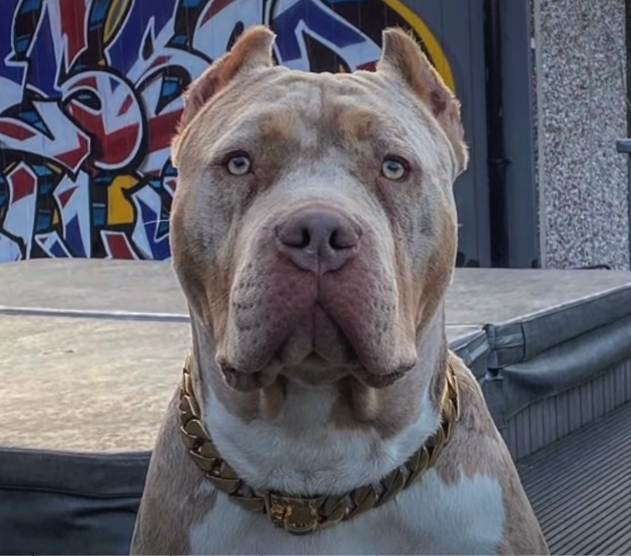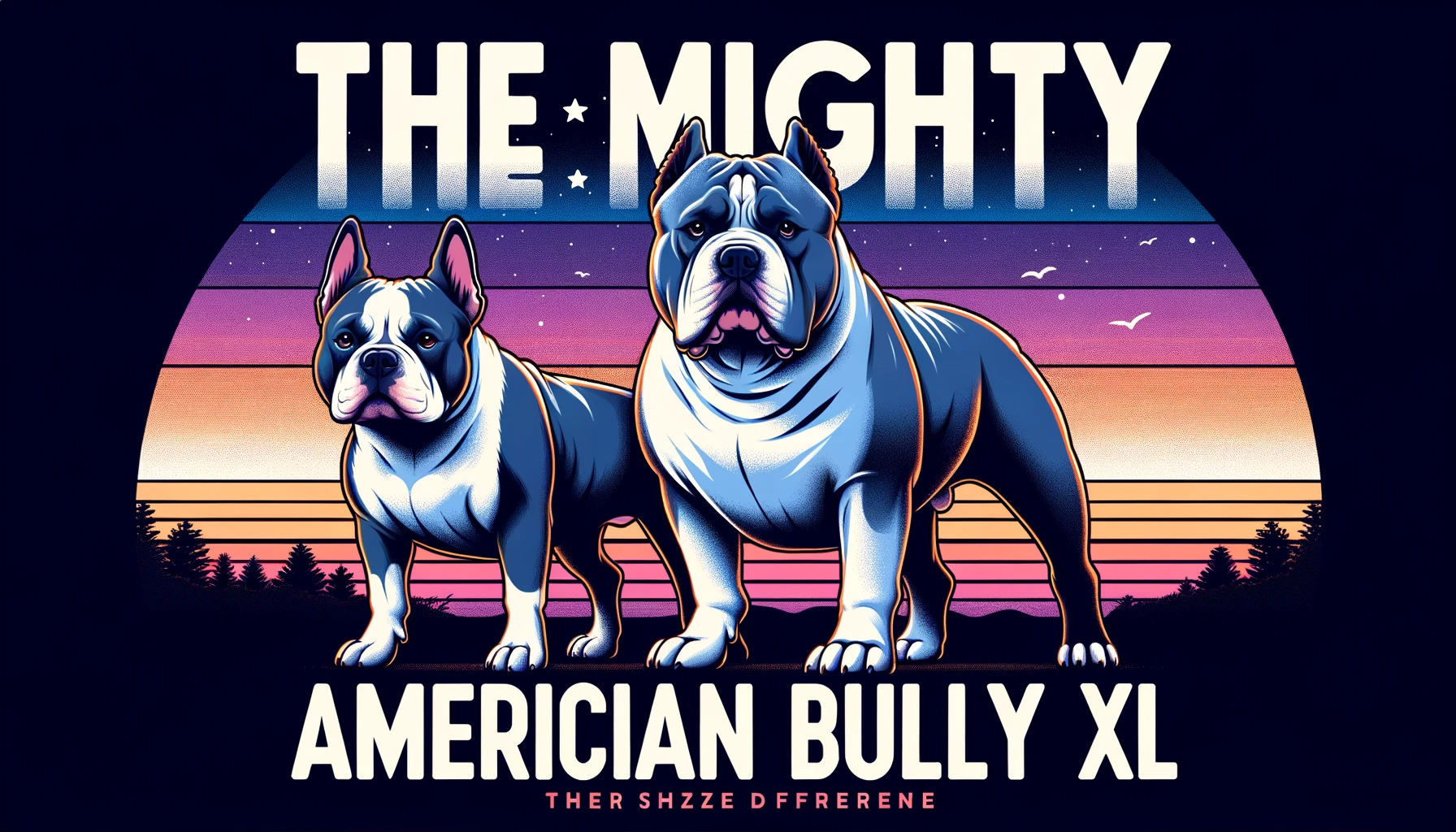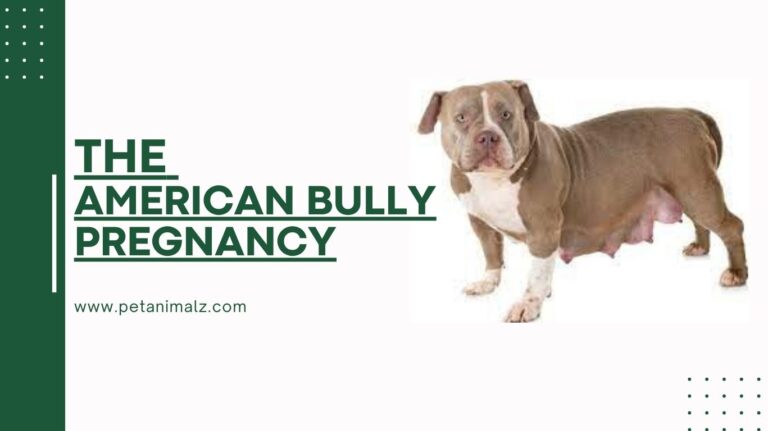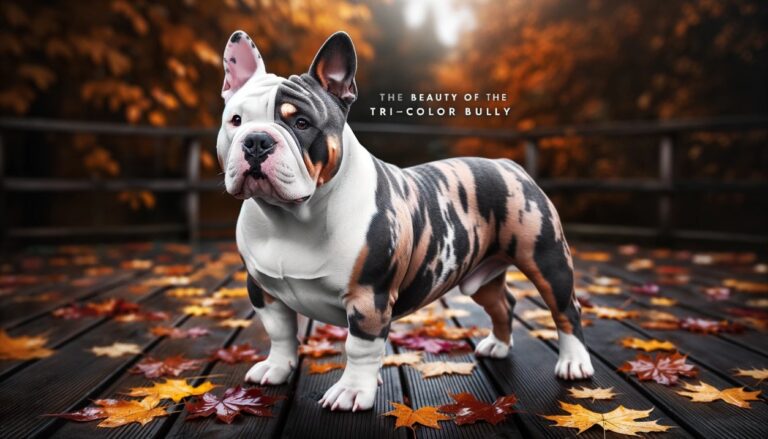What is an American Bully XL: The American XL Bully Dog
Introduction
This article covers the essence of the American Bully XL breed, highlighting their gentle nature, suitability as companions, and the importance of proper care, training, and understanding of legal considerations.
The American Bully XL, like all dogs, thrives in a loving and responsible environment. Prospective owners should need to be aware of the breed’s specific needs in order to invest time and effort into training and socialization. This article will be helpful in understanding the breed’s history, characteristics, and legal status in the area.
Understanding the Breed: American Bully XL
The American Bully XL, a recent addition to the canine world, originated in the United States around the 1980s. It’s a crossbreed of the American Pit Bull Terrier and other dogs in the bully family. This breed is known for its:
- Muscular and robust body
- Broad head and short muzzle
- High-set ears
- Short, glossy coat that comes in various colors
While they may resemble Pit Bulls, American Bully XLs are a breed of their own. They’re larger, more muscular, and have a gentler temperament compared to their Pit Bull cousins.

Misconceptions About XL American Bully
The XL American Bully is a breed that often finds itself at the center of controversy and misunderstanding. Despite their growing popularity, several misconceptions persist about these gentle giants. Let’s debunk some of these myths:
They are Aggressive:
This is perhaps the most common misconception. The truth is, American Bully XLs are known for their friendly and affectionate nature. They are great with families and can get along well with other pets when properly socialized.
They are Dangerous:
Due to their muscular build and resemblance to Pit Bulls, many people assume American Bully XLs are dangerous. However, aggression is not a breed trait. Like any dog, their behavior largely depends on how they are raised and trained.
They are Unhealthy:
Some believe that American Bully XLs are prone to more health issues due to their size. While they do have potential breed-specific health concerns like hip and elbow dysplasia, they are generally robust dogs. Regular vet check-ups and a healthy lifestyle can ensure they lead a long, healthy life.
They are Hard to Train:
Contrary to this belief, American Bully XLs are intelligent and eager to please, which makes them quite trainable. They respond well to positive reinforcement techniques.
They are Outdoor Dogs:
Despite their size, American Bully XLs are not exclusively outdoor dogs. They thrive on human interaction and are happiest when they are part of family activities.
Importance of Understanding Bully Pitbull Bloodline
- Genetics and Breeding Practices: Understanding the bloodline is crucial for breeders who want to maintain or enhance specific traits within the breed. This can include physical characteristics, temperament, and health traits. Knowing the bloodline helps in making informed breeding decisions.
- Health Considerations: Certain bloodlines may be prone to specific health issues. Understanding these can help in providing proper care and medical attention to the dogs.
- Behavior and Temperament: Different bloodlines may exhibit varying behaviors and temperaments. Understanding these can help in training and socializing the dogs, making them suitable for different types of owners and living environments.
- Historical and Cultural Significance: The bloodline can also provide insights into the history and evolution of the breed, as well as its cultural significance in different societies.
- Legal and Ethical Considerations: In some jurisdictions, there may be legal considerations related to the breeding and ownership of Bully Pitbulls. Understanding the bloodline can help in compliance with local regulations.
- Preservation of the Breed: For enthusiasts and breeders, understanding the bloodline is essential for preserving the integrity and uniqueness of the breed.
Temperament and Personality Traits
Despite their tough exterior, American Bully XLs are known for their affectionate and friendly nature. They’re great with:
- Families, including children
- Other pets, when properly socialized
However, it’s important to debunk some common misconceptions about this breed. They’re often labeled as aggressive due to their muscular build and Pit Bull ancestry. But in reality, American Bully XLs are gentle giants who thrive on love, attention, and positive reinforcement.
Health and Lifespan
Like all breeds, American Bully XLs have their share of health concerns. Some common issues include:
- Hip and elbow dysplasia
- Heart conditions
- Skin allergies
On average, a healthy American Bully XL can live between 10 to 12 years. Regular vet check-ups are crucial to catch any potential health issues early and ensure your Bully leads a long, happy life.
Care and Maintenance
Caring for an American Bully XL involves more than just providing food and shelter. Here’s what you need to know:
- Dietary Needs: These dogs require a high-protein diet to maintain their muscular build. Include quality dog food, lean meats, and occasional fruits and vegetables in their diet. Avoid overfeeding to prevent obesity.
- Exercise Requirements: Despite their size, American Bully XLs are active and love to play. Regular walks, playtime, and mental stimulation are crucial for their well-being.
- Grooming and Hygiene: Their short coat is easy to maintain. Regular brushing will keep it shiny and healthy. Regular baths, nail trimming, and dental care are also essential.
What Sets an XL American Bully Apart from Other Breeds of American Bully
The American Bully breed is a diverse group, with several classifications based on size and weight. Among these, the XL American Bully stands out for a few distinct reasons:
- Size: As the name suggests, the XL American Bully is the largest of the American Bully breeds. Males typically stand between 20 to 23 inches at the shoulder, while females range from 19 to 22 inches. Their weight can vary significantly, but they generally weigh between 80 to 150 pounds.
- Physical Appearance: While all American Bullies share a muscular and robust build, the XL variant takes it to another level. They have a more pronounced muscular definition and a larger bone structure compared to their smaller counterparts. Despite their size, they maintain the breed’s characteristic balance and proportionality.
- Temperament: Like other American Bullies, the XL variant is known for its friendly and affectionate nature. However, due to their size, they often exhibit a calmer demeanor. They are less likely to be overly energetic, making them great companions for families with a more relaxed lifestyle.
- Exercise Needs: Due to their larger size, XL American Bullies require regular exercise to maintain their muscle tone and overall health. However, they are not as high-energy as some smaller breeds, so a couple of moderate walks and play sessions per day should suffice.
- Living Space: XL American Bullies can adapt to various living conditions, but due to their size, they do best in homes with ample space. They can live in apartments if they receive enough exercise, but a home with a yard is ideal.
American Bully Breed XL vs. American Bully XXL Breed
The American Bully breed has several classifications, including the XL and XXL sizes. While they share many similarities, there are a few key differences that set them apart:
Size and Weight
The most apparent difference between the XL American Bully and the XXL American Bully is their size:
· XL American Bully:
Males typically stand between 20 to 23 inches at the shoulder, while females range from 19 to 22 inches. They generally weigh between 80 to 150 pounds.
· XXL American Bully:
This is the largest variant of the breed. Males and females typically stand 23 inches or taller at the shoulder. Their weight can vary significantly, but they generally weigh over 150 pounds.
Physical Appearance
Both the XL and XXL American Bullies share the breed’s characteristic muscular and robust build. However, the XXL variant, due to its larger size, has a more pronounced muscular definition and a larger bone structure.
Temperament
Both the XL and XXL American Bullies are known for their friendly and affectionate nature. They are great with families and can get along well with other pets when properly socialized. However, due to their larger size, the XXL variant may exhibit a calmer demeanor compared to the XL.
Exercise Needs
Both the XL and XXL American Bullies require regular exercise to maintain their muscle tone and overall health. However, the XXL, due to its larger size, may require more exercise to prevent obesity and maintain a healthy weight.
Living Space
Both the XL and XXL American Bullies can adapt to various living conditions. However, due to their larger size, they do best in homes with ample space. They can live in apartments if they receive enough exercise, but a home with a yard is ideal.
In conclusion, while the XL and XXL American Bullies share many similarities, their size is the primary factor that sets them apart. Potential owners should consider their living situation, lifestyle, and ability to meet the breed’s specific needs before deciding on the size that best suits them.
Malpractices in Housing of American Bullies
Malpractices in Housing of American Bullies
American Bullies, like any other breed, require proper care and housing to ensure their health and well-being. Unfortunately, there are several malpractices that can occur in the housing of these dogs. Here are some of the most common:
- Overcrowding: This is when too many dogs are kept in a small space, leading to stress, aggression, and the spread of diseases. Each dog should have enough space to move, play, and rest comfortably.
- Poor Sanitation: Lack of regular cleaning can lead to the accumulation of feces and urine, which can cause health problems and create a stressful environment for the dogs.
- Inadequate Shelter: Dogs need protection from extreme weather conditions. Housing that doesn’t provide adequate warmth in cold weather or cooling in hot weather can lead to health issues like hypothermia or heatstroke.
- Lack of Veterinary Care: Regular vet check-ups are essential to catch and treat health issues early. Neglecting this can lead to untreated diseases and suffering.
- Poor Nutrition: Feeding low-quality food, or not providing enough food and clean water, can lead to malnutrition and dehydration.
- Lack of Exercise and Enrichment: American Bullies are active and intelligent dogs. They need regular exercise and mental stimulation. Lack of these can lead to obesity, boredom, and destructive behavior.
- Inhumane Breeding Practices: Some breeders may engage in unethical practices like overbreeding or inbreeding, which can lead to health issues and genetic defects.
- Neglect of Socialization: Dogs need to interact with other dogs, people, and various environments to develop good behavior and coping skills. Neglecting this can lead to fear, aggression, or anxiety.
- Physical Abuse: Any form of physical harm or punishment is a severe malpractice and is illegal.
- Neglect of Basic Needs: This includes neglecting the dog’s needs for companionship, grooming, and training.
Training and Socialization
Training and socializing an American Bully XL should start at a young age. Here are some tips:
- Early Socialization: Expose them to different environments, people, and animals to develop a well-rounded temperament.
- Training Tips: Use positive reinforcement techniques. They respond well to treats, praises, and petting.
- Behavioral Issues: If any behavioral issues arise, address them immediately. Consult a professional trainer if needed.
Legal and Ethical Considerations
Owning an American Bully XL comes with certain responsibilities:
Breed-Specific Legislation:
Some regions have restrictions or bans on bully breeds. Ensure you’re aware of local laws.
Ethical Breeding Practices:
Always choose ethical breeders who prioritize the dogs’ health and well-being.
\Adoption vs Buying:
Consider adopting from a rescue or shelter. Many American Bully XLs are in need of loving homes.
FAQs
Is American Bully XL aggressive?
No, they are generally friendly and affectionate dogs.
How big does American Bully XL get?
Males can reach up to 23 inches in height, while females can reach up to 21 inches.
Are American Bully XLs good family dogs?
Yes, they are known for their loyalty and love for their human families.
What is the largest breed of bully?
The American Bully XL is the largest of the American Bully breeds. Males stand between 20 to 23 inches at the shoulder, while females stand between 19 to 22 inches.
Is American Bully a family dog?
Yes, the American Bully, including the XL variant, is generally considered a good family dog. They are known for their loyalty, affection, and adaptability to different home environments. However, they require proper training and socialization from a young age.
What is the most expensive Pitbull?
The most expensive Pitbull ever sold is an American Bully named White Rhino, which sold for a whopping $250,000. This breed is a descendant of the American Pitbull Terrier.
How big is an XL bully?
The American Bully XL is the largest of the American Bully breeds. Males stand between 20 to 23 inches at the shoulder, while females stand between 19 to 22 inches.
What kind of dog was Hulk?
Hulk is a famous American Pitbull Terrier known for his massive size. He weighed 175 pounds and was one of the most expensive American Pitbull Terriers, with his price reaching up to $55,000.
What are XL bullies good for?
XL Bullies, like other American Bullies, are primarily bred to be companion dogs. They are known for their loyalty, affection, and adaptability. They can also participate in various dog sports and work as therapy or service dogs with proper training.
What is XL bully made of?
The American Bully, including the XL variant, is a breed that was developed using the American Pitbull Terrier as the foundation breed. Other breeds like the American Bulldog, English Bulldog, and Olde English Bulldogge were also used to fine-tune desired physical characteristics and personality traits.
Conclusion
In this article, we’ve explored the American Bully XL breed, debunked common misconceptions, and provided tips on their care, training, and legal considerations. These gentle giants, with their loving nature and striking appearance, make wonderful companions for the right owners. Remember, every dog deserves love, care, and understanding, and the American Bully XL is no exception.





